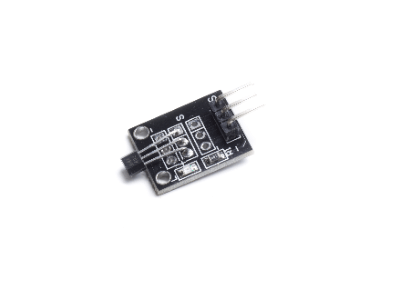What Is a Magnetic Sensor?

A magnetic sensor is a device that detects magnetism and is used to detect magnetism and geomagnetism generated by a magnet or an electric field. Magnetic sensors can detect the vector (magnitude and direction) of magnetism.
Magnetic sensors can be broadly classified into Hall sensors using Hall elements and magnetoresistive element sensors using magnetoresistive elements (MR). Hall sensors measure the Hall voltage generated by the Lorentz force in a vertical magnetic flux on the element, whereas MR sensors measure the ohmic resistance generated by the Lorentz force in a horizontal magnetic flux on the element.
Uses of Magnetic Sensors
In recent years, air sensors have been used in a wide range of applications, from consumer products to industrial equipment.
A typical example is smartphones. They are used for direction detection in mapping and orientation applications.
Also, in the industrial and research fields, they are often used to inspect and detect substances that generate magnetism. Examples of detection targets are listed below.
- Detection of geomagnetism generated from the earth
- Magnetic detection of minerals in the bedrock
- Detection of biological magnetism generated by muscles and brains
- Magnetic ink detection to prevent counterfeiting of banknotes
- Magnetic detection is used for non-destructive testing of structures
- Magnetic flux detection produced by electric currents
Detection of the above can be applied to the following products
- Compasses
- Rotation and angle sensors
- Magnetic flux sensors for MRI using biomagnetic flux
- Non-contact ammeter
Principle of Magnetic Sensors
Magnetic sensors detect magnetic vectors (magnitude and direction) by converting Lorentz forces due to magnetic flux into electrical signals.
Different types of magnetic sensors can be broadly classified into Hall sensors using Hall elements and magnetoresistive element sensors using magnetoresistive elements (MR).
1. Hall sensors
Hall sensors detect magnetic vectors using the Hall effect between a Hall element and a perpendicular magnetic flux. The Hall effect is a phenomenon in which an electromotive force is generated at 90 degrees to the magnetic flux and current when a current perpendicular to the magnetic flux is generated.
2. MR Sensor
MR sensors detect magnetic vectors using magnetoresistive elements whose resistance changes when they sense magnetism.
There are four types of magnetoresistive elements: semiconductor magnetoresistive elements, isomeric magnetoresistive elements, giant magnetoresistive elements, and tunnel magnetoresistive elements.
Other Information on Magnetic Sensors
1. Magnetic Sensors and Compass
A compass is a tool for determining direction. Permanent magnets have been used since ancient times, but in recent years electronic compasses, which use magnetic sensors instead of permanent magnets to calculate the direction, have become popular.
Electronic compasses are also found in smartphones. Its role within a smartphone includes direction detection by azimuth apps and navigation with map apps.
Most map applications use GPS, but the accuracy of GPS position detection is only a few meters. Therefore, it is not sufficient for navigation. In addition, GPS signals may not be received in areas with poor reception.
To solve these problems, the system is combined with an electronic compass to detect azimuth and direction of travel and compensate for GPS errors. It is also possible to adjust the map display so that the direction of travel always points upward.
Note that because the electronic compass calculates azimuth from weak geomagnetic fields, it also uses technology to compensate for the effects of magnetic parts such as speakers.
2. Magnetic Sensors and Automobiles
Various sensors are used to realize control systems that enhance the safety and comfort of automobiles, and magnetic sensors have advantages in terms of reliability and cost. They are mainly used in the following applications.
- Vehicle speed detection
- Engine speed control
- ABS (Anti-lock Breaking System)
- Power steering
- Car navigation
In recent years, automated driving technology has been attracting attention, and technological development is progressing toward realization using AI technology. While there are still many issues to be addressed, magnetic marker systems are attracting attention as a way to solve these problems.
Unlike fully autonomous automatic driving, magnetic marker systems are guidance-based systems. It refers to a driving support system that uses a vehicle’s magnetic sensors to detect magnetic markers placed on the road, identify the current location, and control the vehicle’s path. Demonstration tests have been started to realize automated driving on route buses.